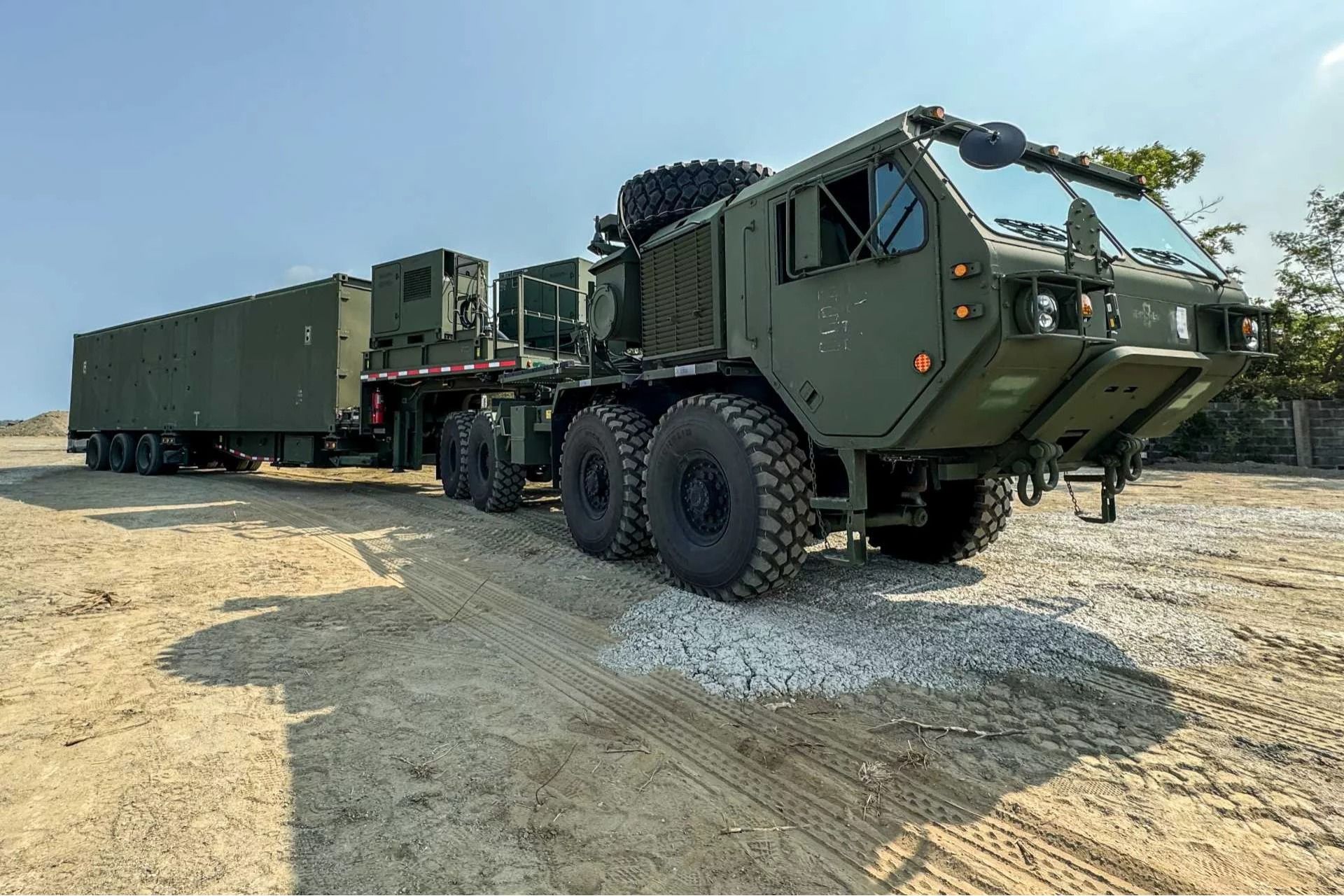US Typhon Missiles In The Philippines: Implications And Analysis

Table of Contents
Enhanced Philippine Defense Capabilities
The deployment of US Typhon missiles significantly bolsters the Philippines' defensive posture against potential threats in the strategically vital South China Sea. While specific details regarding the exact missile model and deployment locations remain undisclosed, the very presence of these advanced systems signals a substantial upgrade in the Philippines' military capabilities. Assuming these are long-range, precision-guided missiles, their capabilities would include:
- Improved deterrence against maritime incursions: The enhanced range and accuracy of the Typhon missiles would deter aggressive actions by potentially hostile actors in the region, particularly in contested areas of the South China Sea. This provides a credible defense against illegal fishing, encroachment on maritime boundaries, and other assertive actions.
- Enhanced surveillance capabilities in the South China Sea: The deployment could integrate with existing surveillance networks, providing enhanced real-time monitoring of maritime activities and potential threats. This improved situational awareness would allow for a more effective response to any security challenges.
- Strengthened alliance with the United States: The joint deployment underscores the growing strategic partnership between the US and the Philippines, solidifying a key alliance in the Indo-Pacific region. This visible demonstration of US commitment strengthens the Philippines’ security posture.
- Potential for increased regional stability (or instability): While the aim is increased deterrence and stability, the deployment could also inadvertently heighten tensions, sparking a potential arms race or miscalculation leading to escalation.
However, the integration of these advanced systems also presents logistical challenges. These include ensuring adequate logistical support, comprehensive training for Philippine personnel, and the ongoing maintenance costs associated with such sophisticated weaponry.
US Strategic Objectives in the Indo-Pacific
The US deployment of Typhon missiles in the Philippines serves several key strategic objectives within its broader Indo-Pacific strategy. These include:
- Projection of US power and commitment to allies: The deployment clearly demonstrates the US's commitment to its allies in the face of growing Chinese assertiveness. It serves as a powerful symbol of its continued presence and influence in the region.
- Counterbalance to Chinese military expansion in the South China Sea: China's increasing military presence in the South China Sea, including the construction of artificial islands and military bases, is a major concern for the US and its allies. The Typhon missiles are intended to counter this expansion and deter further aggressive actions.
- Strengthening of the US-Philippines alliance: The joint deployment further solidifies the strategic partnership between the US and the Philippines, demonstrating a commitment to mutual defense and security cooperation.
- Potential impact on the broader US pivot to Asia: This deployment reinforces the US’s strategic pivot towards the Asia-Pacific region, signifying a long-term commitment to maintaining regional stability and countering any potential threats to the established order.
However, the deployment carries inherent risks. These include the potential for miscalculation, unintended escalation, and heightened tensions with China.
China's Reaction and Regional Implications
China's reaction to the deployment of US Typhon missiles in the Philippines is likely to be multifaceted, encompassing diplomatic, economic, and potentially military responses. We can anticipate:
- Increased tensions in the South China Sea: The deployment will almost certainly exacerbate existing tensions in the South China Sea, potentially leading to increased naval activity and heightened surveillance by both sides.
- Potential for military escalation or arms race: China might respond by increasing its own military deployments in the region, leading to a dangerous arms race and increasing the risk of accidental conflict.
- Impact on regional trade and economic relations: The deployment could disrupt regional trade and economic relations, potentially impacting shipping routes and investment flows.
- Influence on other countries' alignment with either side: This deployment might influence other countries in the region to choose sides, potentially deepening existing geopolitical divisions.
This situation significantly alters the regional power dynamics, raising the risk of miscalculation and increasing the potential for conflict in the South China Sea.
The South China Sea Dispute and its Escalation Potential
The deployment of US Typhon missiles directly impacts the ongoing disputes in the South China Sea, significantly increasing the potential for escalation.
- Increased risk of accidental conflict: The presence of advanced weaponry in a contested region dramatically increases the risk of accidental conflict, whether through miscalculation or technical malfunction.
- Potential for heightened naval activity and surveillance: Both the US and China are likely to increase naval patrols and surveillance activities in the region, further raising the risk of incidents.
- Impact on freedom of navigation in the region: The heightened tensions could impact freedom of navigation in the South China Sea, potentially affecting international trade and economic activity.
- Increased need for diplomatic de-escalation: The situation necessitates intensified diplomatic efforts to de-escalate tensions and prevent any accidental clashes.
Conclusion: Assessing the Future of US Typhon Missiles in the Philippines
The deployment of US Typhon missiles in the Philippines carries significant strategic implications for all parties involved. While it enhances the Philippines' defensive capabilities and reaffirms the US's commitment to regional security, it also significantly increases tensions with China and elevates the risk of conflict in the volatile South China Sea. Understanding the complex interplay of these factors is crucial for assessing the future of this deployment and its potential long-term consequences. A balanced approach is needed, recognizing both the potential benefits of enhanced deterrence and the very real dangers of escalation.
We urge readers to continue researching the topic of US Typhon missiles in the Philippines, staying informed about future developments, and engaging in thoughtful discussions surrounding the implications of this deployment for regional security and global stability. The unfolding situation demands careful monitoring and a commitment to diplomatic solutions to prevent further escalation.

Featured Posts
-
 Stan Approves David Walliams Fantasy Novel Fing Gets The Go Ahead
May 20, 2025
Stan Approves David Walliams Fantasy Novel Fing Gets The Go Ahead
May 20, 2025 -
 Complete Sandylands U Tv Listings Never Miss An Episode
May 20, 2025
Complete Sandylands U Tv Listings Never Miss An Episode
May 20, 2025 -
 Formula 1 Yeni Sezonun Heyecani Icin Geri Sayim
May 20, 2025
Formula 1 Yeni Sezonun Heyecani Icin Geri Sayim
May 20, 2025 -
 The Leclerc Hamilton Dynamic A Look At The Ferrari Team Order Incident
May 20, 2025
The Leclerc Hamilton Dynamic A Look At The Ferrari Team Order Incident
May 20, 2025 -
 Abidjan Le Diletta Marque Une Nouvelle Ere Pour Le Port
May 20, 2025
Abidjan Le Diletta Marque Une Nouvelle Ere Pour Le Port
May 20, 2025
